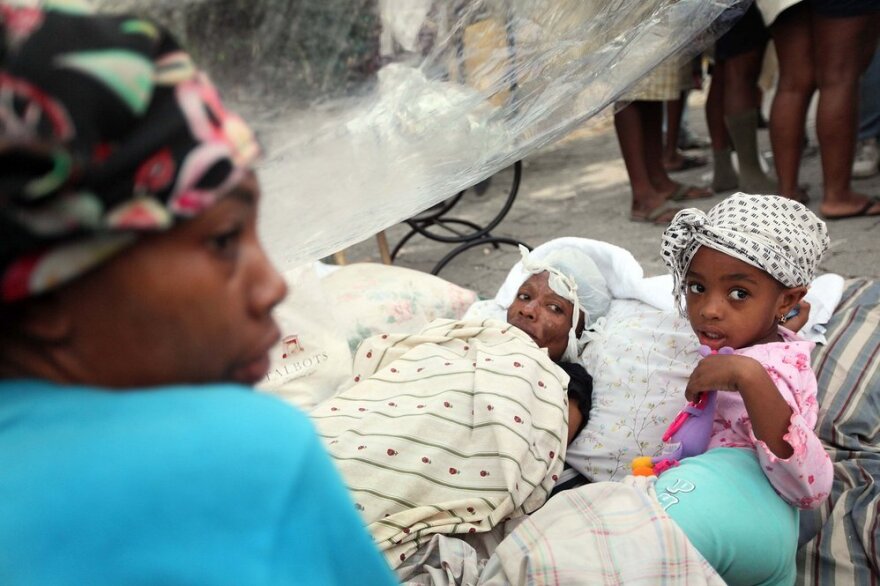Search teams fighting through the gnarled concrete and steel in collapsed buildings in Haiti are guided by the principle "do the best for the most," as they zero in on pockets of debris where survivors may be trapped.
Jack Wise, chief of the disaster preparedness section of the Los Angeles Fire Department, said converging teams operate on that principle in a situation where most of the lives will be saved within the brief "golden" period.
"After seven days, after the golden hour, the golden day, the highest probability of finding survivors goes down," said Wise. "We've had miracles, but we have to look to do the best for the most victims."
On Thursday, Wise was preparing his teams for activation to Haiti — making sure members had inoculations and passports in hand — so they would be ready to move within four hours of receiving orders for deployment. An experienced rescue worker who pulled victims from the rubble of California's Northridge earthquake in 1994, Wise said time is of the essence in search operations.
"We have a finite time to conduct these rescues," he said.
Guided by that knowledge, Wise said, rescue teams do much of their work before disaster strikes. For example, California Urban Search and Rescue members must have at least eight weeks of training just to be eligible for service in the earthquake-prone state. After that, they train one week a month to maintain their expertise.
The 70-member teams include medical personnel, as well as canine units and structural engineering, heavy equipment and hazardous materials specialists. Before its arrival, the team lays out a plan of operation from viewing aerial photographs supplied by government planes and talking to experts at the scene.
Once on the ground, hazardous materials experts make certain rescue sites are safe from gas or chemicals that may have been released by the quake, while medical personnel begin treating victims, canine units conduct searches and engineering specialists stabilize buildings.
"We truly go into an impact area where there's no other support. We're completely self-sufficient," said Wise. "Every person on the team is a worker."
Wise said personnel are trained to head first to areas where the most victims are expected to be trapped — hospitals, schools, office buildings. Crews then perform triage, going after easy-to-reach victims first, moving on to "light service" areas where the debris is readily movable, then searching for pockets of debris that could support life.
Canine units are put into place to help sniff out people buried so deep in the rubble that they couldn't be seen or heard. Special cameras and listening devices are lowered into the most promising areas, as rescuers search for signs of life.
Search-and-rescue personnel from Virginia and California were on the ground Thursday in Haiti, and more teams from California, Florida and Texas were in various stages of deployment.
Wise said U.S. teams carry about 50,000 pounds of equipment — including 90-pound jackhammers and chain saws that can cut through concrete — when they're activated. They aim to be ready to go within four hours with everything they need to work and live for up to 15 days.
Haitian officials still have no estimate of the number of people trapped beneath the rubble of buildings and thousands of private homes.
The International Federation of Red Cross and Red Crescent Societies estimated that as many as 3 million people are in need of aid. In Geneva, Red Cross spokesman Jean-Luc Martinage said the Haitian Red Cross estimated 45,000 to 50,000 people were killed.
Experience has told Wise that the toughest part of the job for rescuers will be working with people who are trapped.
"You have, as rescuers, a close bond with the victims. It's tough to leave a person once you make initial contact with them," especially knowing that they may endure many hours of horror before they're free, he said.
"The people who are going out on these teams are wonderful human beings," he said of his colleagues. "It's a testimony of how we help one another in an emergency."
Copyright 2022 NPR. To see more, visit https://www.npr.org. 9(MDAzMjM2NDYzMDEyMzc1Njk5NjAxNzY3OQ001))




























